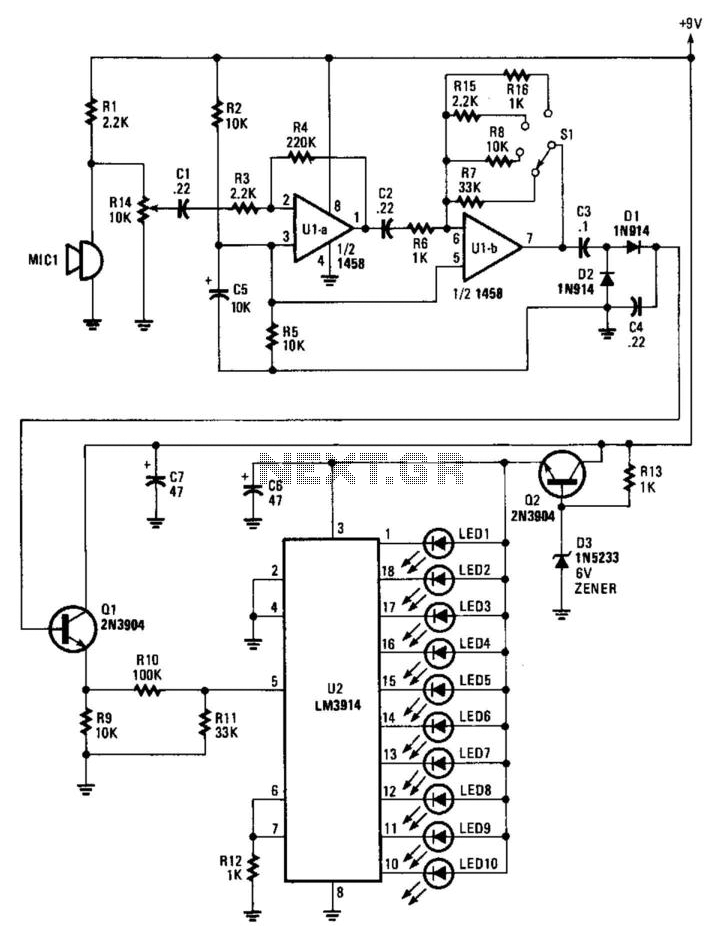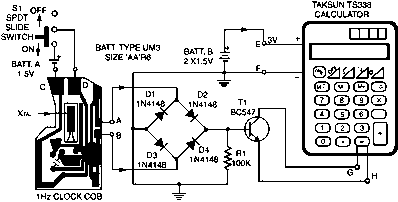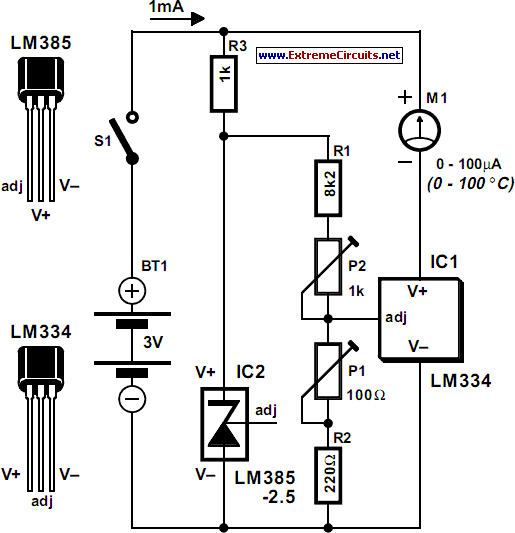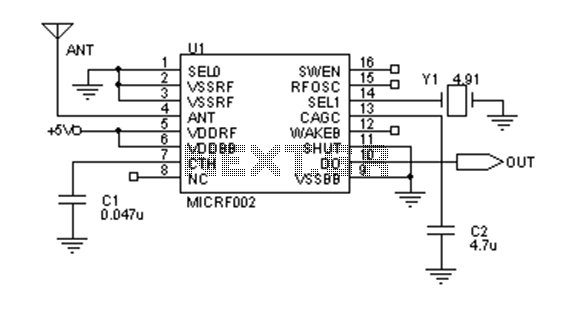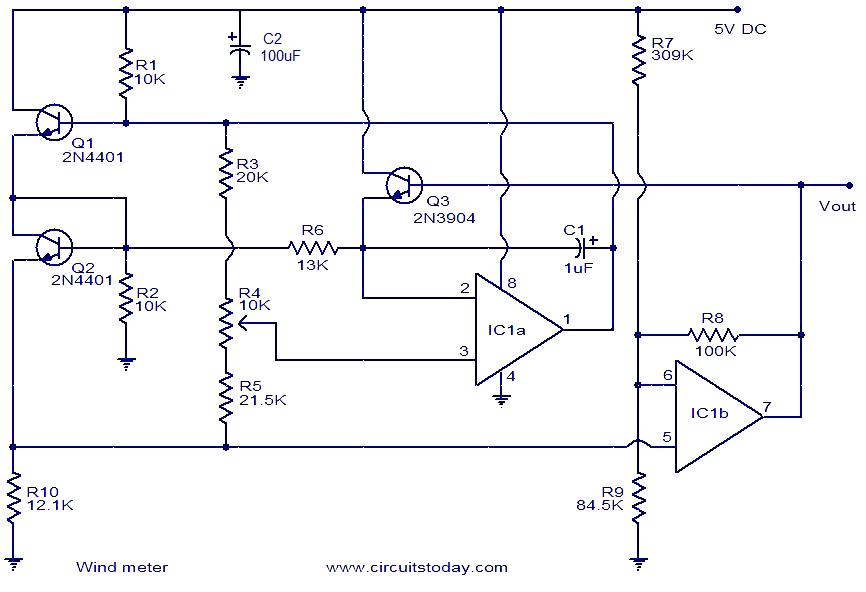
vu meter 1
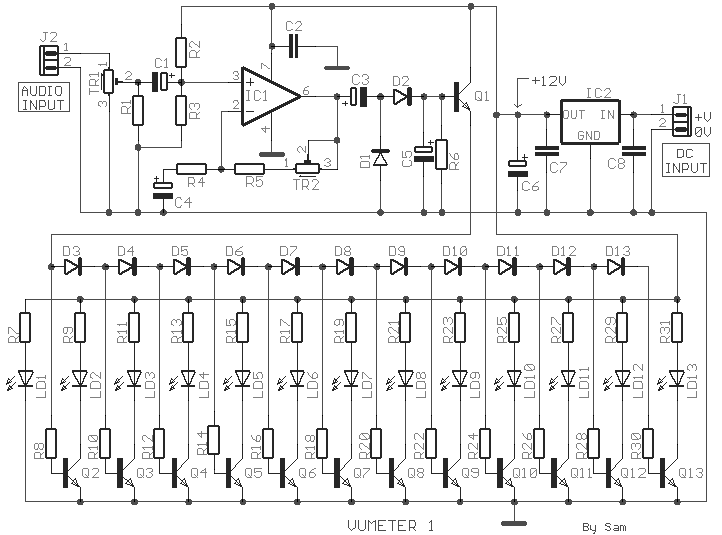
This circuit functions as a simple optical level indicator for sound signals, adaptable to various user needs. It allows for adjustments to input levels via trimmer potentiometers TR1 (Level) and TR2 (Gain). The signal is then rectified by diodes D1 and D2, which eliminate the negative portions of the signal during rectification. The processed signal is directed to the main indicator circuit, which comprises diodes D3 through D13, transistors Q2 through Q13, and associated components. The optical indication is provided by LEDs LD1 through LD13, which illuminate when the signal level exceeds approximately 0.65V. The circuit requires a total current of 100 mA for full indicator functionality. Additional LEDs can be incorporated, provided that the current requirements for the new LEDs are calculated accordingly.
This circuit operates by monitoring the amplitude of sound signals and converting them into a visual representation through an array of LEDs. The input sound signal is first received and passed through a level adjustment stage, where the user can fine-tune the input sensitivity using the trimmer potentiometers TR1 and TR2. TR1 adjusts the input signal level, while TR2 controls the gain, allowing for precise calibration based on the sound environment.
Following the adjustment, the signal is rectified using diodes D1 and D2. These diodes are configured to allow only the positive half-cycles of the AC signal to pass, effectively cutting off the negative portions that do not contribute to the signal level indication. The rectified output is then fed into the main indicator circuit, which consists of a series of diodes (D3 to D13) and transistors (Q2 to Q13). The transistors serve as switches that control the current flowing through the LEDs based on the rectified signal's amplitude.
The LED array (LD1 to LD13) visually represents the sound signal level. Each LED is designed to turn on when the rectified voltage reaches approximately 0.65V, providing a clear visual cue of the signal strength. The design allows for scalability; additional LEDs can be added to the circuit as needed. However, it is crucial to recalculate the total current requirements to ensure that the power supply can adequately support the additional components without exceeding the rated current of 100 mA for the entire indicator circuit.
Overall, this optical level indicator circuit is versatile and can be tailored to various applications, making it suitable for different user requirements in sound signal monitoring.It is a simple circuit of optical index of level of sound signals, adapted in various needs of user. It can be adapted in various levels of entry, regulated from trimmer TR1 (Level) - TR2 (Gain), then it is rectified by the D1-2 (cutting off of negative periods of signal-rectification) and drived to the main circuit of index, that it is constitute d by D3. D13, the transistors Q2-Q13 and the materials that exist around them. The optical index him we take from the line of LED LD1-13. The each led turns on when the level is altered at 0, 65V roughly. The requirements in current are 100 ma with complete index. We can add all units LED we want, always calculating the current where they will need the news LED. 🔗 External reference
This circuit operates by monitoring the amplitude of sound signals and converting them into a visual representation through an array of LEDs. The input sound signal is first received and passed through a level adjustment stage, where the user can fine-tune the input sensitivity using the trimmer potentiometers TR1 and TR2. TR1 adjusts the input signal level, while TR2 controls the gain, allowing for precise calibration based on the sound environment.
Following the adjustment, the signal is rectified using diodes D1 and D2. These diodes are configured to allow only the positive half-cycles of the AC signal to pass, effectively cutting off the negative portions that do not contribute to the signal level indication. The rectified output is then fed into the main indicator circuit, which consists of a series of diodes (D3 to D13) and transistors (Q2 to Q13). The transistors serve as switches that control the current flowing through the LEDs based on the rectified signal's amplitude.
The LED array (LD1 to LD13) visually represents the sound signal level. Each LED is designed to turn on when the rectified voltage reaches approximately 0.65V, providing a clear visual cue of the signal strength. The design allows for scalability; additional LEDs can be added to the circuit as needed. However, it is crucial to recalculate the total current requirements to ensure that the power supply can adequately support the additional components without exceeding the rated current of 100 mA for the entire indicator circuit.
Overall, this optical level indicator circuit is versatile and can be tailored to various applications, making it suitable for different user requirements in sound signal monitoring.It is a simple circuit of optical index of level of sound signals, adapted in various needs of user. It can be adapted in various levels of entry, regulated from trimmer TR1 (Level) - TR2 (Gain), then it is rectified by the D1-2 (cutting off of negative periods of signal-rectification) and drived to the main circuit of index, that it is constitute d by D3. D13, the transistors Q2-Q13 and the materials that exist around them. The optical index him we take from the line of LED LD1-13. The each led turns on when the level is altered at 0, 65V roughly. The requirements in current are 100 ma with complete index. We can add all units LED we want, always calculating the current where they will need the news LED. 🔗 External reference
